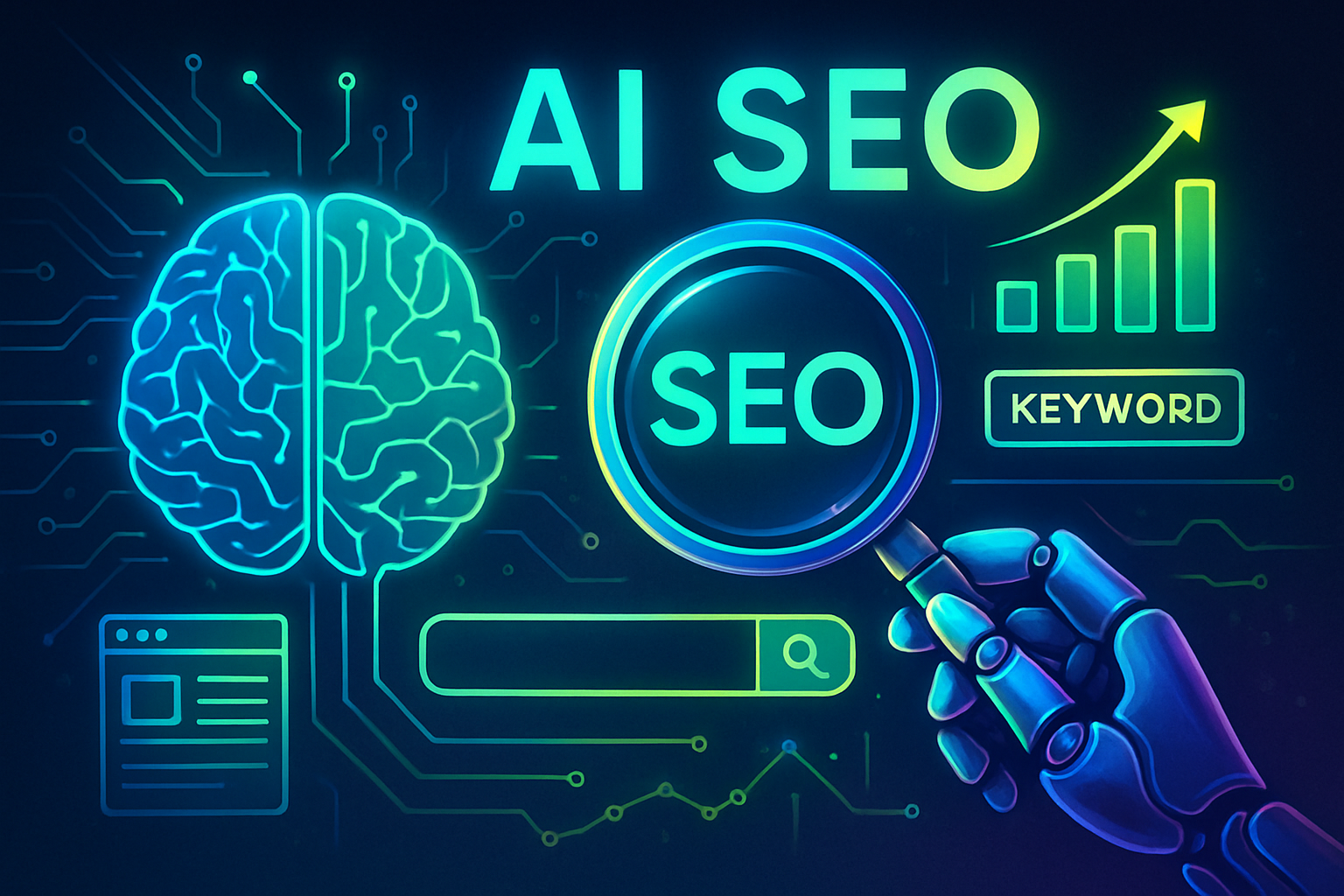The Rise of AI Overviews and Why Being Featured in AI Overviews Matters
Google AI Overviews are a prominent feature of Google Search that fundamentally change how search results appear, providing users with instant, comprehensive answers directly in the search results page. This feature uses Google’s advanced AI to generate summaries that often appear above organic results, shifting visibility away from traditional listings. These AI-generated overviews pull information from various sources, including authoritative sites and videos, to create cohesive responses. They frequently use structured information and bulleted lists to help users quickly understand information, making the results more digestible and actionable.
For example, if you search for “best yoga studios near me” in English searches in the U.S., Google AI Overviews may present a bulleted list of top studios, relevant videos, and related questions, all before the organic results. This shift makes sense, as users increasingly prefer instant answers that save time and effort. As a result, AI Overviews can drive more clicks to featured sites, especially those that rank highly and provide structured, relevant content.
The broader impact is that search engines are evolving, integrating search generative technologies like Google’s AI Overviews to enhance user experience. Google’s AI systems favor content that is well-structured and answers related questions, while also adapting the follow-up feature to refine user interaction. To be included in these overviews, your content must rank well and be optimized for these new SERP features.
Monitoring your AIO presence—tracking how often your content appears in AI Overviews—should now be a core part of your SEO strategy.
TABLE OF CONTENTS:
- How AI Search Works
- Common Reasons Your Site Isn't Featured in AI Overviews
- Optimizing Your Content for AI Overview Inclusion
- Technical Optimization Strategies
- Content Strategy for AI Overview Success
- Monitoring and Measuring Your AI Overview Performance
- Future-Proofing Your AI Overview Strategy
- Related Video
How AI Search Works
Enterprise AI search optimization, leveraging Google’s cutting-edge generative algorithms and sophisticated targeting, is fundamentally revolutionizing how B2B organizations capture high-value search visibility. At the strategic core of this transformation are AI Overviews—algorithmically generated authority summaries that dominate prime real estate, positioning at the top of search engine results pages. These overviews strategically deliver key intelligence, enabling decision-makers to access mission-critical insights without having to navigate through multiple touchpoints.
For enterprise clients seeking comprehensive market intelligence, AI Overviews also integrate authoritative source links, providing strategic gateways to diverse thought leadership perspectives and supplementary business context.
The development of these AI Overviews relies on proprietary algorithmic frameworks that systematically analyze massive enterprise data repositories from across the digital ecosystem. Google’s Search Labs functions as a strategic testing environment for these optimization features, utilizing real user behavioral analytics and application engagement metrics to refine how AI-generated business summaries are strategically positioned. This continuous optimization process ensures that enterprise AI search results deliver not only precision accuracy but also increasingly valuable ROI-driven relevance to organizational decision-making requirements.
One of the most compelling competitive advantages of AI search optimization is its sophisticated capability to process complex enterprise queries and multiple strategic searches within a single optimization cycle. Unlike traditional SEO that focuses on basic keyword matching, AI search comprehensively understands the strategic intent and nuanced business objectives behind each enterprise query. This means decision-makers can pose more sophisticated business questions or execute follow-up strategic queries, and the AI will generate responses that deliver actionable intelligence and provide measurable business insights—all within the same results optimization framework.
For enterprise website stakeholders and strategic SEO professionals, the emergence of AI Overviews signals a fundamental paradigm shift in how to approach content optimization strategy. Traditional strategies that prioritize ranking for specific keywords in organic listings no longer deliver a competitive market advantage. Instead, content must be architecturally structured with strategic headings, bullet-point frameworks, and systematically organized information that AI can efficiently parse and present strategically. Optimizing for featured snippets and other SERP positioning features is now mission-critical for maintaining competitive visibility in enterprise search results.
Google’s AI Overviews are strategically designed to promote enhanced diversity of authoritative web links, driving high-value traffic to a broader spectrum of enterprise publishers. This approach delivers measurable benefits to both decision-makers, who gain access to a comprehensive spectrum of business intelligence, and enterprise websites, which have strategic opportunities to be featured in search engine result positioning. However, to capitalize on this competitive advantage, websites must focus on developing high-authority, intelligence-rich content that directly addresses enterprise queries and provides comprehensive strategic answers.
Performance analytics demonstrate that AI Overviews are exceptionally effective for branded enterprise queries, where decision-makers are researching specific intelligence about a company, solution, or strategic service offering. In these scenarios, AI-generated summaries deliver concise, authoritative overviews, often featuring cited authority sources and direct links to official enterprise pages. For more complex strategic questions, AI search draws on a comprehensive range of authoritative sources and provides additional business context, ensuring decision-makers receive thorough and strategically reliable answers.
While the increased prominence of AI Overviews has resulted in a significant decline in the visibility of traditional organic listings, it also presents strategic opportunities for organizations that strategically adapt. Understanding how enterprise AI search optimization works and optimizing content for AI-generated summaries leads to competitive rankings and attracts high-value, strategic traffic. This means focusing on long-tail enterprise keywords, structuring content for featured snippet optimization, and continuously refining your strategic approach based on performance feedback and competitive analytics.
In a strategic summary, AI search optimization is fundamentally reshaping enterprise search positioning, offering decision-makers faster, more strategically accurate answers and challenging organizations to evolve their SEO optimization strategies. Embracing these transformational changes and focusing on structured, high-authority content development will help enterprises capitalize on the new era of AI-driven search engine result optimization.
Common Reasons Your Site Isn’t Featured in AI Overviews

Poor Content Structure and Formatting
AI systems favor content that’s well-organized and easy to parse. If your content lacks clear headings, proper formatting, or logical structure, AI algorithms struggle to understand and extract relevant information. Websites with walls of text or poorly formatted content are often overlooked in favor of better-structured alternatives.
Lack of Authoritative Signals
AI Overviews prioritize content from authoritative sources. If your website lacks strong domain authority, quality backlinks, or established credibility markers, it’s less likely to be selected as a reliable source for AI-generated responses.
- Low domain authority scores
- Insufficient high-quality backlinks
- Missing author credentials and expertise indicators
- Lack of citations and references
Technical SEO Issues
Technical problems can prevent AI crawlers from properly accessing and understanding your content. Common issues include slow loading speeds, mobile optimization problems, and crawling barriers that limit AI systems’ ability to process your pages effectively.
Content That Doesn’t Match Search Intent
AI Overviews are designed to provide direct answers to user queries. If your content doesn’t clearly address specific questions or fails to provide comprehensive information on topics, it won’t be selected for inclusion in AI-generated summaries.
Optimizing Your Content for AI Overview Inclusion
Implement Strategic Content Formatting
Structure your content with clear, descriptive headings that mirror common search queries. Use H2 and H3 tags to create a logical hierarchy that AI systems can easily follow. Break up long paragraphs into digestible chunks and use bullet points or numbered lists to present information clearly and effectively. Incorporate bulleted lists to organize key points, as these are often used in AI Overviews to make summaries more digestible and informative for users.
After formatting with headings and lists, ensure you provide structured information by implementing schema markup such as Article, FAQ, HowTo, or Reviews. This helps AI systems parse and present your content more effectively.
Consider creating FAQ sections that directly answer common questions in your industry. This format aligns perfectly with how AI Overviews present information, increasing your chances of being featured.
Focus on E-A-T (Expertise, Authoritativeness, Trustworthiness)
Establish clear author credentials and expertise indicators throughout your content to ensure consistency and credibility. Include author bios, professional qualifications, and relevant experience details. Link to authoritative sources and cite credible references to support your claims.
- Add comprehensive author bio pages
- Include relevant certifications and credentials
- Cite industry studies and authoritative sources
- Display trust signals like testimonials and awards
Optimize for Featured Snippet Formats
Since AI Overviews often pull from content that would traditionally appear in featured snippets, optimize your content for these formats. Create concise, direct answers to common questions within the first 40-50 words of relevant sections.
Use table formats for comparison data, step-by-step lists for processes, and definition formats for explanatory content. These structured approaches make it easier for AI systems to extract and present your information.
Technical Optimization Strategies

Improve Site Performance and Accessibility
Ensure your website loads quickly across all devices, as AI systems favor fast, accessible content. Optimize images, minimize code, and implement proper caching strategies. Mobile optimization is particularly crucial, as many AI Overview queries originate from mobile devices.
Implement Structured Data Markup
Use schema markup to help AI systems better understand the context of your content. Implement relevant schema types such as Article, FAQ, How-to, or Review markup depending on your content type. This structured data provides clear signals about the purpose and organization of your content.
Optimize Internal Linking Structure
Develop a robust internal linking strategy that enables AI crawlers to effectively discover and comprehend the relationships between your content pieces. Use descriptive anchor text that clearly indicates the linked content’s topic and relevance.
Content Strategy for AI Overview Success
Create Comprehensive Topic Coverage
Develop in-depth content that covers topics comprehensively rather than superficially. AI systems tend to favor sources that provide comprehensive, authoritative information on specific subjects. Create pillar pages that serve as extensive resources for broad topics, supported by detailed subtopic pages.
Target Long-Tail and Question-Based Keywords
Focus on long-tail keywords and question-based queries that align with how users search for information. AI Overviews often respond to specific, detailed questions rather than broad, generic terms.
- Research “People Also Ask” sections for keyword ideas
- Use tools like AnswerThePublic to find question-based queries
- Include related questions in your content to increase the chances of being featured in AI Overviews and People Also Ask sections
- Analyze competitor content appearing in AI Overviews
- Monitor search console data for question-based impressions
Monitoring and Measuring Your AI Overview Performance

Track your progress using Google Search Console to monitor which queries trigger AI Overviews featuring your content. Set up alerts for brand mentions in AI-generated responses and regularly audit your content’s performance in these new search features. Additionally, monitor your AIO presence by using SEO tools to track how often your content appears in AI Overviews.
Use third-party SEO tools to track AI Overview appearances and analyze competitor strategies. This data helps you understand what’s working and identify opportunities for improvement.
Future-Proofing Your AI Overview Strategy
Stay ahead of evolving AI Overview features by maintaining high-quality, regularly updated content that demonstrates expertise and authority. As AI systems become more sophisticated, they’ll increasingly favor sources that consistently provide accurate, valuable information to users.
Invest in establishing genuine authority in your niche by demonstrating thought leadership, conducting original research, and creating comprehensive resources. This long-term approach ensures sustained visibility in AI-driven search results as the technology continues to evolve.




